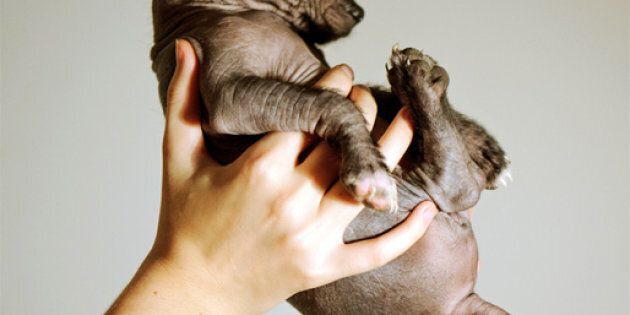
Fifty years ago, the Xoloitzcuintli -- the Mexican Hairless dog -- was on the edge of extinction. Now one sleeps in my bed. Whether this is an improvement in the creature's circumstance can be debated. Other bald news, however, is unquestionably good: After centuries honing its attributes as the world's weirdest (not ugliest) dog, the Mexican Hairless was officially welcomed this year at the Westminster Kennel Club Dog Show. Giorgio Armani, the Xolo who took Best in Breed on Monday, was an overwhelming people's favorite: The crowd howled its approval, and Twitter was buzzing with Bald Love all day. The Xolo has arrived.
Never mind that it arrived 3,000 years ago.

The Xoloitzcuintli (pronounced show-low-eetz-QUEENT-lee), has had a crucial role in the history of this continent. It has been worshipped. It has been eaten. The same people who worshipped it also ate it, which is just wrong, but the Aztecs were noted for doing things we don't always appreciate.
If you lived in Mesoamerica before Dante was imported, the Xolo was the sacred creature you looked to for guidance through the underworld after death. (If you were a Xolo, and you knew that the guy you were guiding enjoyed dining on your relatives, I expect you'd lead him somewhere truly special.) This bald canine Virgil can be found in pre-Columbian art, and -- as I have noted -- tangled in our duvet every morning.
The bed is in fact a traditional place for a Xolo: when not being worshipped or eaten, it was employed as a bed warmer. The expression "three dog night" refers to a night so cold that you require three hairless dogs in your bed to keep you warm. (This may be apocryphal, but I want it to be true, therefore it is.)
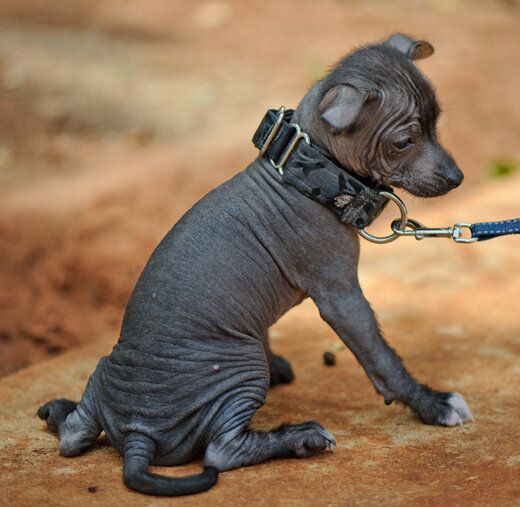
The Xoloitzcuintli is an ancient breed, yes, and stranger even than the other hairless dogs of the world. Unlike the Chinese Crested, the American Hairless Terrier, and the Peruvian Inca Orchid, the Xolo came into being without human intervention: There is no evidence that it was bred for baldness. Some insist that it wandered across the Bering Strait with the ancestors of the Olmec; the more accepted theory is that the breed arose spontaneously in North America, thousands of years ago, as a bald mutation of an indigenous canine. That's right: The blind Darwinian process somehow gave rise to the world's most gorgeous dog.
Now, there are some who would disagree with this aesthetic judgment. Psychopaths, for instance: They do not find the Xolo an overwhelmingly fetching creature. Hernán Cortés -- an unpleasant conquistador -- hated the Mexican Hairless, and attempted to eradicate the breed. People like you and me, however -- who are not rapacious colonial serial killers -- recognize that this is the most elegant dog in existence, rivaled only by the Italian Greyhound.
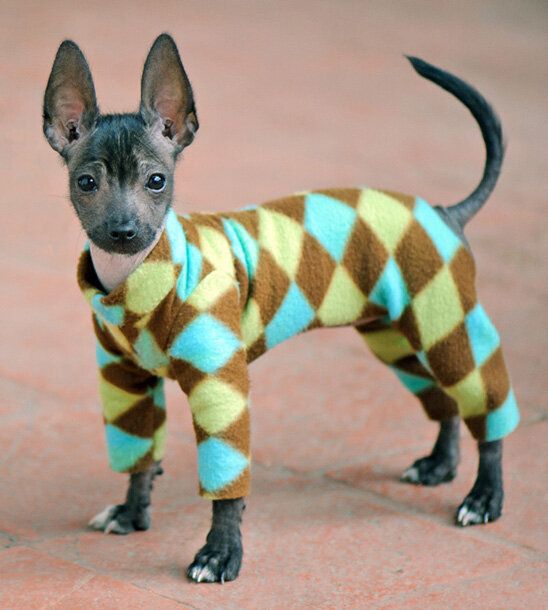
Our Xolo, Snorkel Louise, has had a difficult time expressing her peerless beauty. She lives in the same house as Pixel, our Italian Greyhound, who is something of a celebrity in Oaxaca. We have in fact found random photos of Pixel all over the web, snapped by tourists who were captivated by her radiance while passing through town. Pixel's mom was a Mexican champion, and her dad a world champion: That's a lot to live up to.
On the other hand, the greatest aesthetes in the nation have recognized the superiority of the Xolo. The near-extinct creature's fortunes were reversed partially because Frida Kahlo decided to make them a prominent part of her menagerie, and was photographed posing with them by the great Mexican photographer Lola Alvarez Bravo.
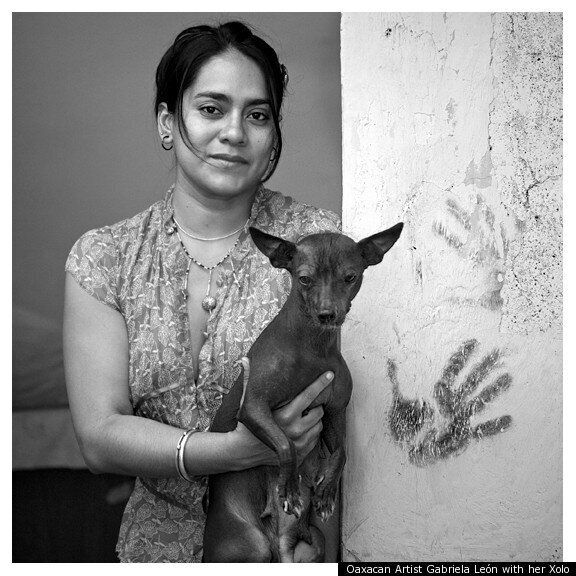
These days, in fact, many of Oaxaca's most important artists own Xolos descended from a single bloodline. Snorkel Louise may or may not be part of this family, but most of the dogs in Oaxaca are probably cousins. This is not to say that the type is in-bred: The breed is perhaps the healthiest in existence -- with no known hereditary illnesses -- and regularly lives to the age of 20. It has a mystical reputation for spreading health, too: Our landlady in Oaxaca was thrilled that we'd brought home a famously therapeutic dog.
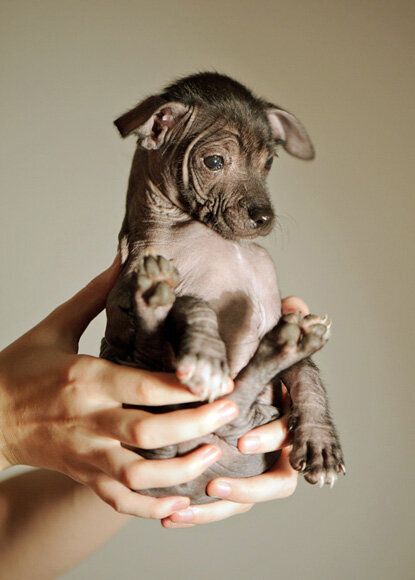
At the moment there are less than a 1,000 Xoloitzcuintlis in America. Expect that number to change. With Giorgio Armani's star turn at this year's Westminster, the Xolo is no longer a mythical exotic; and the rare breed's survival is pretty much guaranteed, for the simple reason that you are going to adopt one. While any responsibly-bred Xolo can be considered a rescue -- this creature really did come very close to disappearing -- there are in fact abandoned Xolos urgently in need of adoption: The Xolo Rescue League, headquartered in Alberta, coordinates this crucial business across Canada and the United States.
The Xoloitzcuintli comes in two varieties -- hairless and coated -- and three sizes: standard, miniature, and toy. Baldness is prized, of course. Snorkel is a hairless toy, as are most of the Xolos we meet in Oaxaca. When you choose yours (and you do want one), be aware that you can find one of these exquisite beasts as large as a Border Collie, should you decide that hairlessness ought to be the dominant theme in your household.
And why shouldn't it be?
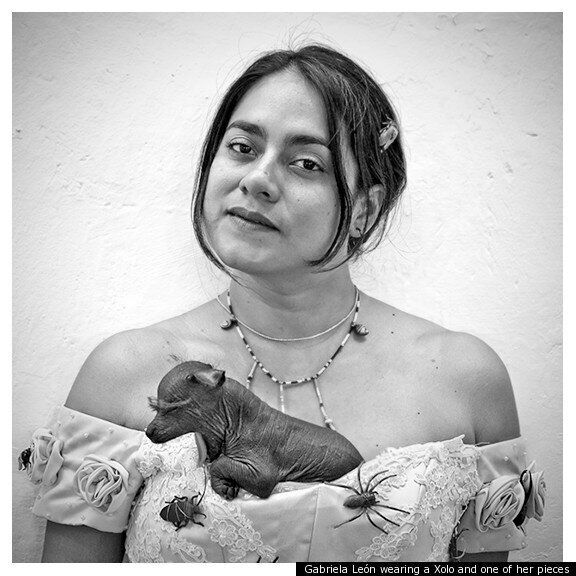

*All photos by Douglas Anthony Cooper